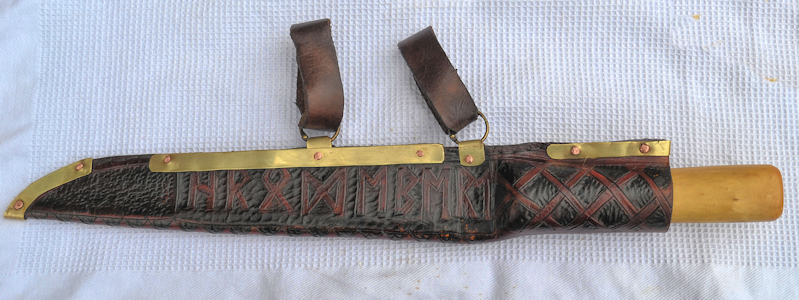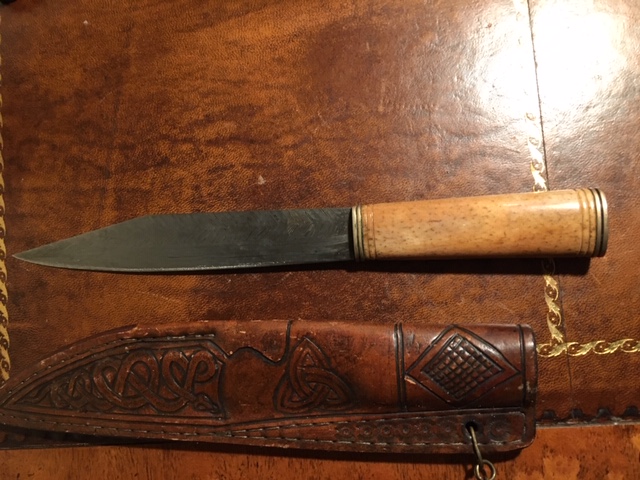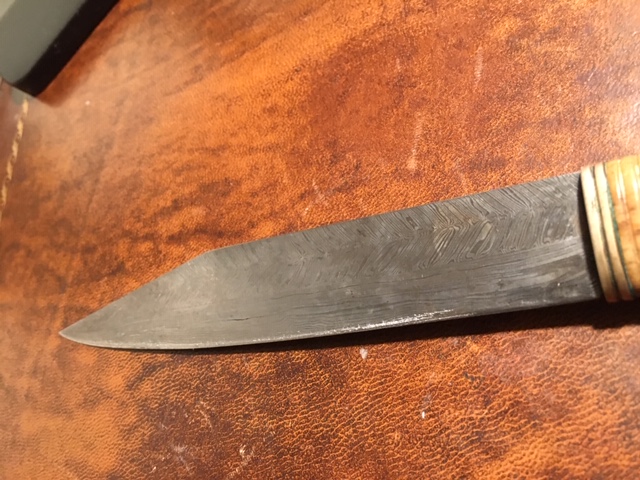First the disclaimer: I make this review as a paying customer, I am not linked to Wieland Forge in any other way and have received no inducements for this review.
I asked Jason to make a seax for me to go with a blunt re-enactment seax I had purchased from him before. This is a re-creation of an 8th-11th century Viking/Saxon Broken-back Seax. The blade is made of iron sourced from old Victorian wrought iron railings. the steel edge forge welded on to the body of the blade. Handle of boxwood and deer antler. The antler marked with circle and dot decoration.
The stats:
Weight: 12.4 Oz (0.352kg)
Length overall: 16.5'' (42cm) Blade: 10.5'' (27cm)
POB: 1.5'' (4cm) from handle
Profile taper 1.16'' (29.4mm) at handle, widens slowly to 1.37x'' (34.9mm)at widest point 7'' (18cm) from handle.Back of the blade then drops sharply meeting the curved rising edge in a sharp point.
Distal taper 0.23'' (5.8mm) at handle, 0.18'' (4.6mm) at mid blade, 0.15'' (3.8mm) 2 inches from tip.
Nicely patterned blade arising from the use of old wrought iron. This is not pattern welded just natural striations formed in the iron. The attached steel edge is visible as a broad dark section running the full length of the blade edge. The blade has a thin triangular cross-section with no fuller. Deer antler (smoothed and decorated with circle and dot stamping) is used for the first 1.5” of the handle, the rest being boxwood. The handle is oval in cross-section with a slightly waisted profile. The handle is glued to the blade, no pins or peening. Not sure what type of glue is used, seems to be some sort of dark mastic. Everything is solid and secure.It is comfortable and, although smooth, provides a sure grip. However, historically, this style of blade has no guard so care should be taken when stabbing..
I feel this is a historically accurate representation. I particularly like the forged edge/iron body blade construction. The blade patternation is interesting rather than overly artistic. The ''break'' in the back of the blade occurs just over one-third of the distance from the tip. This fits with original examples where the break occurred anywhere between one-third and one-half of the distance from the tip. I think this would be classified as a narrow-bladed seax and seem to typify an Anglo Saxon seax of the 10th and early eleventh centuries.
I am very happy with this blade, I just need to try and make a suitable scabbard. I have included one picture of my blunt seax which I use for re-enactment events.

Blunt re-enactment seax
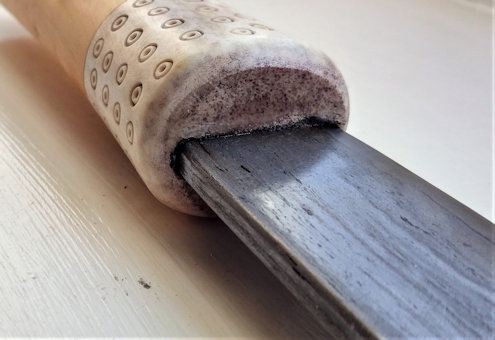
Handle join
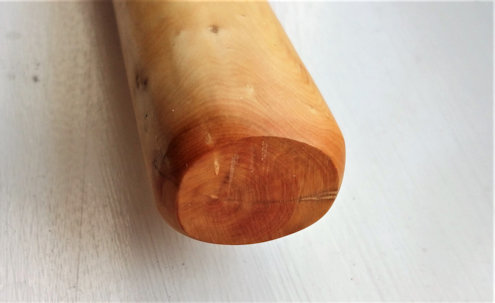
Handle end
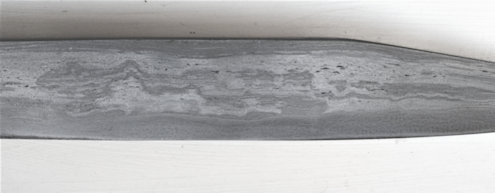
Blade pattern

Profile right

Profile left
